|
|
||||||||||||||||||||||||||||||||||||||||||||||||||||||||||
|
Please sign my Guestbook and leave feedback |
||||||||||||||||||||||||||||||||||||||||||||||||||||||||||
|
Recent Additions |
||||||||||||||||||||||||||||||||||||||||||||||||||||||||||
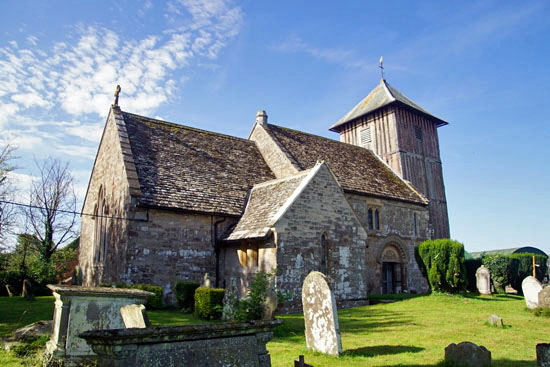 |
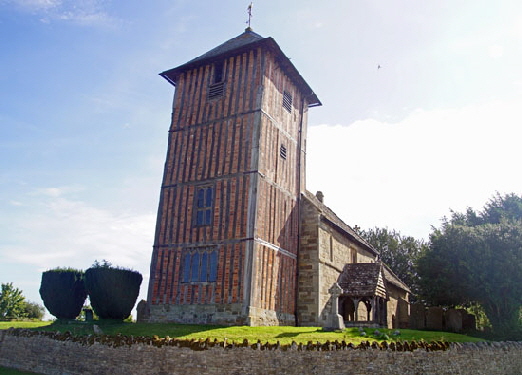 |
||||||||||||||||||||||||
|
Left: the church from the north east. The Norman north door can clearly be seen. The church is something of an oddity. The Tudor west tower gives it an obvious air of eccentricity but beyond that is the great height of the nave - matched by the later chancel - with what seems at first sight like a clerestory but is in fact simply an unusually high pair of windows. The height of the nave makes me believe that it is of its original pre-Conquest proportions albeit with no sign of the original masonry. Right: The church from the south west showing the unique tower. |
|||||||||||||||||||||||||
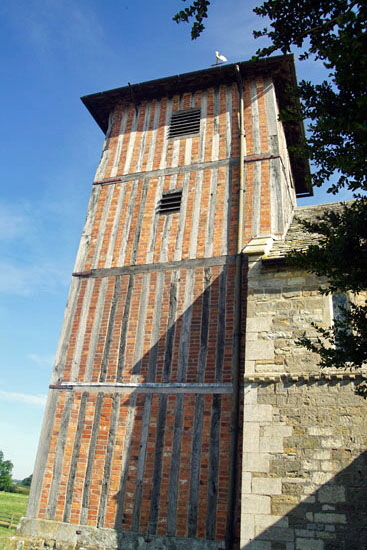 |
|||||||||||||||||||||||||
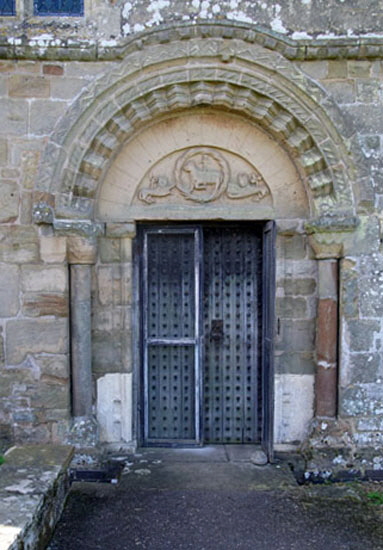 |
|||||||||||||||||||||||||
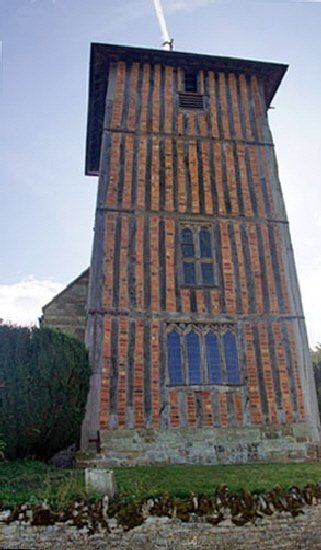 |
|||||||||||||||||||||||||
|
Left and Centre: The tower from respectively the west and the south. It is quite remarkable. The uprights are close together and this was probably to give an illusion of great height. On the east side the infilling is of stone but on the other three sides the infilling is faced with eighteenth century brick giving a pleasing - if slightly incongruous look. Right: The north doorway. It is a neat composition. Tympanums were in fashion quite briefly so we can probably say with some confidence that the doorway is from the early part of the twelfth century. The carved agnus dei design is itself itself of quite modest proportions with a finely carved set of plain voussoirs separating it from the three courses of decorative work outside it. It is all very neatly done. |
|||||||||||||||||||||||||
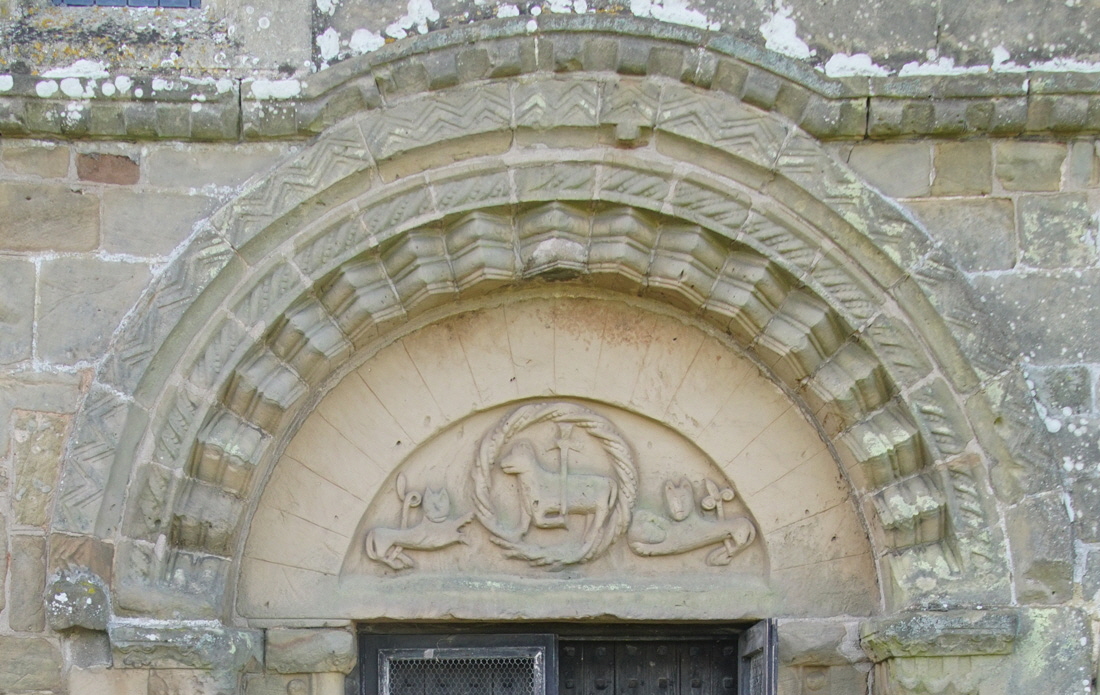 |
|||||||||||||||||||||||||
|
A closer view of the Upleadon tympanum. The agnus dei needs little introduction and is a hardy perennial on Norman tympani although, unlike this one, many are abominably carved. The relative accuracy of the lamb sculpture supports the notion that the supporting creatures on either side are possibly lions that the sculptor had never seen rather than cats. Note that both have long tails but that on the right terminates in a curious trefoil design. The Church Guide believes them to be generic “grotesque creatures” representations of “the evils and dangers of the temporal world”. Surprisingly nobody has remarked upon there being an object carved within the paws of the creature on the right and its shape is very like that of a human head. That would seem to me to confirm the Church Guide’s view that I think would otherwise be open to question. The inner chevron moulding is finely executed with none of the irregularly-sized voussoirs that characterise many Norman doorways by less competent mason-sculptors/. The outer decorative course of zig-zag pattern is rather less well-done, however. It looks rather like masons found when they got to the centre of the arch they had miscalculated the geometry slightly. To add to the confusion they put in two stones of different size and for reasons we can never know decided to leave a little carving of a head as if to emphasise the error. The Norman string course is still in place and tracks the profile of the arch. |
|||||||||||||||||||||||||
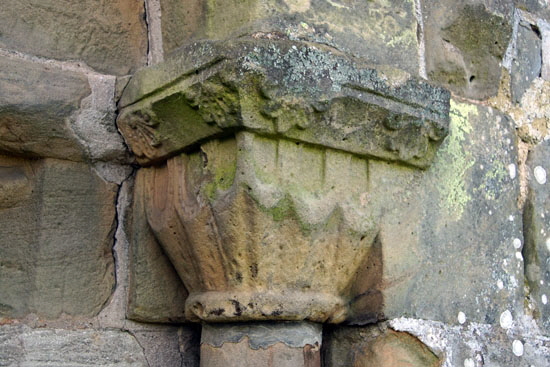 |
|||||||||||||||||||||||||
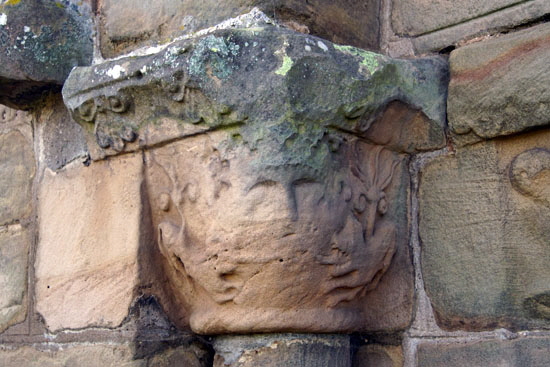 |
|||||||||||||||||||||||||
|
The north door capitals. Left: The east side is badly weathered but yo can still readily make out a crowned head with beasts on either side. They have teeth and are growling or biting at the face. Tina Negus who has photographed more mediaeval carvings than most people have eaten hot dinners believes it to be one of many examples found throughout Europe of “Daniel and Master of Beasts”. Wikipaedia says this : The story of Daniel in the lions' den (chapter 6 in the Book of Daniel) tells how Daniel is raised to high office by his royal master Darius the Mede, but jealous rivals trick Darius into issuing a decree which condemns Daniel to death. Hoping for Daniel's deliverance, but unable to save him, the king has him cast into the pit of lions. At daybreak he hurries back, asking if God had saved his friend. Daniel replies that God had sent an angel to close the jaws of the lions, "because I was found blameless before him." The king has those who had conspired against Daniel, and their wives and children, thrown to the lions in his place, and commands to all the people of the whole world to "tremble and fear before the God of Daniel". Right: The west side capital is plain. Both capitals. however, have foliated patterns on their upper surfaces. |
|||||||||||||||||||||||||
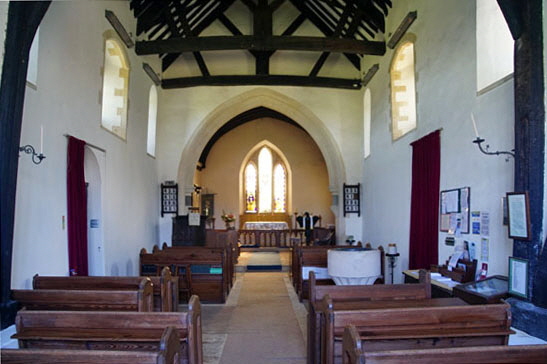 |
 |
||||||||||||||||||||||||
|
Left: Looking towards the east end. The chancel arch replaced an Anglo-Saxon east window in 1879 and it takes some leap of the imagination to envisage what the church looked like in its original guise. Four Norman window spaces have been retained (two are either side of the chancel arch). Did the Normans raise the nave walls or did they completely replaces them? Right: This Norman mask appears above the chancel arch and, of course, has been reset there. Interestingly, this church makes no claims for Herefordshire School provenance yet this mask does appear in Malcolm Thurlby’s book as an example of work that appears to have stylistic connections to masons at Gloucester Cathedral and - much more significantly - to masks at Kilpeck Church in Herefordshire. Yet, he makes no claims for the Norman north doorway to be of the Herefordshire School. |
|||||||||||||||||||||||||
 |
|||||||||||||||||||||||||
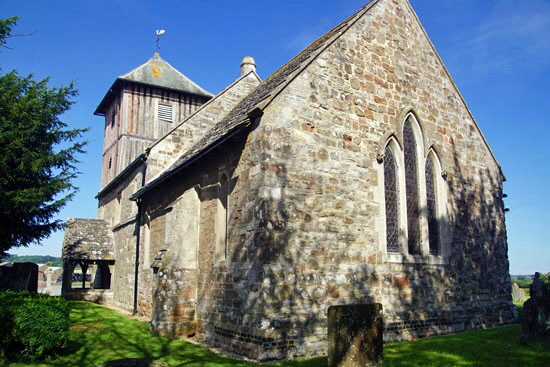 |
|||||||||||||||||||||||||
|
Left: In many ways this is the most extraordinary image of Upleadon Church. Looking towards the west it is hard to to believe that the nave is surmounted by a large west tower. The bracing timbers form an x-shape and are naturally curved. Note Norman window spaces at the furthest end. Right: The church from the south east. The east window is in faux-Early English triple lancet style much beloved of the Victorian modernisers. The east side of the tower has infilling in stone rather than in brick and this would have originally been true of all of the tower. |
|||||||||||||||||||||||||
|
Click Here to Return to “The World’s Greatest Church Trail II” |
|||||||||||||||||||||||||